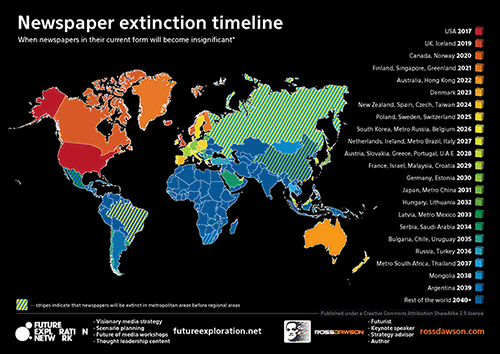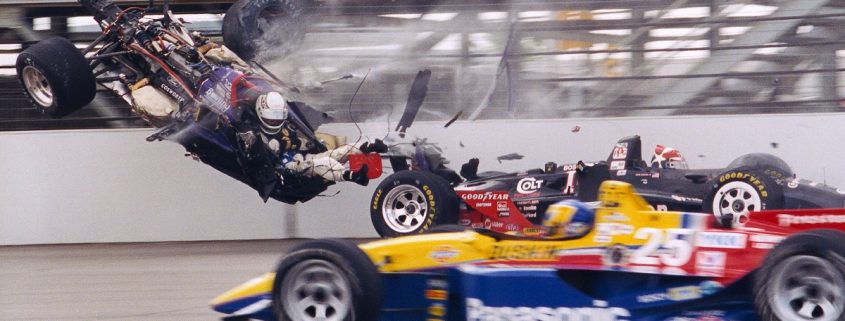About getting predictions wrong as a futurist (and how to create the future you want)
Over the years I have created a lot of content – books, reports, visual frameworks and far more – that has been very widely seen. From all this undoubtedly the one piece that has been the most visible globally is my Newspaper Extinction Timeline launched in October 2010, that predicted for each country in which year newspapers in their then-current form would become “insignificant”.

Coverage in over 100 major publications from more than 30 countries helped to garner many, many millions of views, attract critics galore, and generate substantial debate.
While I don’t believe in predictions because they will almost always be wrong, I made an exception in this case, in order to provoke news industry executives and to stimulate useful strategic action to respond to a changing industry landscape.
The first date on the timeline – US in 2017 – is now demonstrably wrong (though possibly not vastly – we will see).
I have written an extensive review of the timeline, its original intent, and where the predictions stand now: Review of the Newspaper Extinction Timeline: what we got wrong and the future of news from here.
Please do read the review if you have any interest at all in the future of news or in futures thinking.
The timeline was widely mis-interpreted as an attack on the news industry. While I understand that it would be viewed as negative, for me the most important issue was never whether we continued to have news-on-paper, but rather how we could create a positive future for news.
Hanging on too long to a dying medium instead of focusing on growing channels was most likely to jeopardize the future of any news organization, as has been proven to be the case.
Almost all my futures work for client organizations is fundamentally about creating the future. The future does not happen, it is created. By far the best reason to engage in futures thinking is to understand what you need to do to shape the future positively.
I also believe that the future of news and the news industry will be at the heart of how we create a positive future for humanity. Unless we are well-informed we will not be able to build a positive future, individually or collectively.
That is why I have launched a new publication, Creating the Future of News. Its intent is to support a positive future for the news industry, by providing analysis, data, and a forum for constructive conversations and sharing.
The publication is still in Beta, but already has substantial data and other resources.
Please visit the site, join the community, and get involved.
Predictions are not valuable unless they inspire useful action. Rather than simply look at the future, we need to work to create the future. And the best way to do that is to help the right ideas, people and resources to connect.
I hope Creating the Future of News supports that in some way large or small. Being right or wrong doesn’t matter. Contributing in whatever way possible to creating a better future does.
Image: Paul Reynolds


